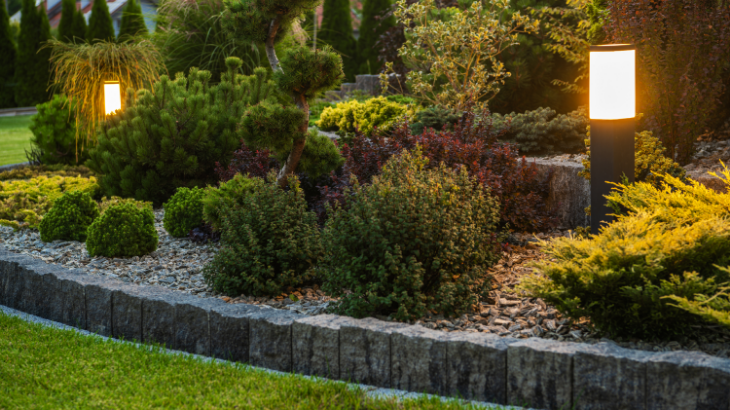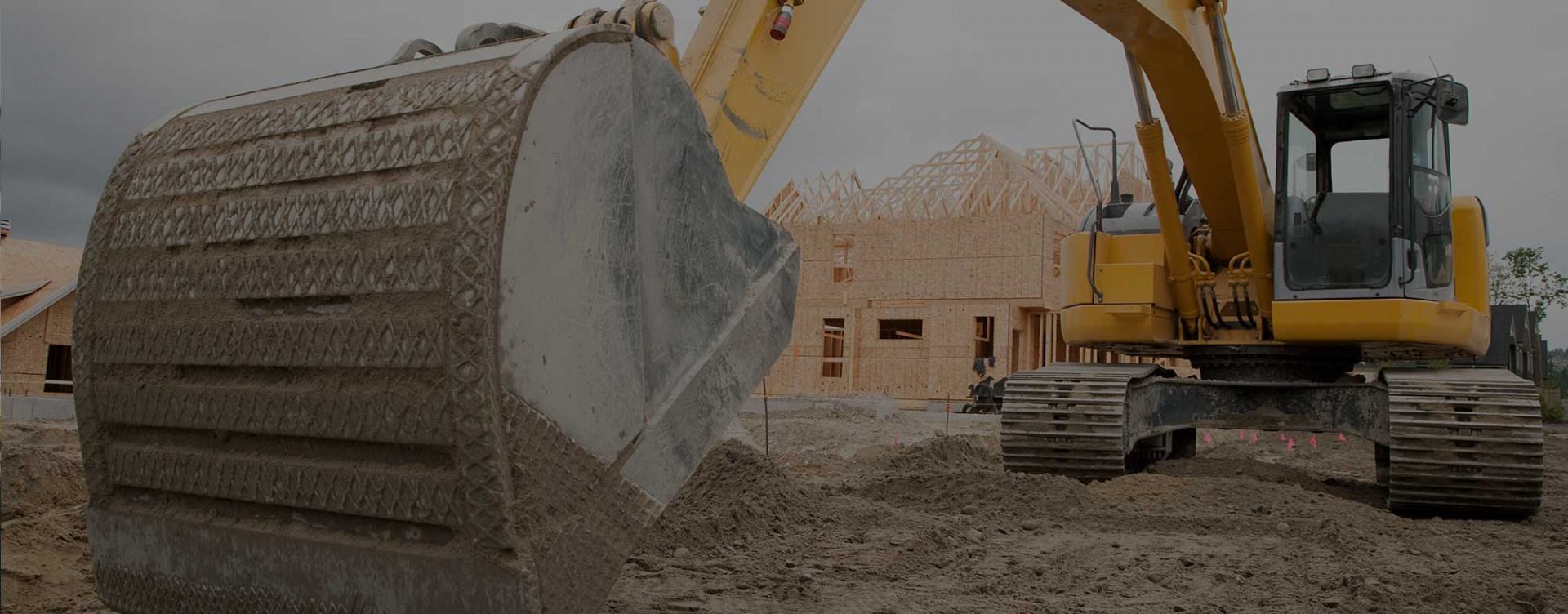
- Good outdoor lighting design can improve security and make your business stand out.
- Available lamp options vary in light output, color quality and lighting efficiency.
- Both the architectural style and the needs of the facility should be considered.
Businesses are always looking for ways to make their facilities stand out. In addition to added security, a well-designed outdoor lighting system can help you outshine the competition. If you are not certain about the power of good outdoor lighting, consider your own impression when you see a business that is poorly lit. A careful design with well-chosen lamps and fixtures can create an outdoor lighting system that minimizes energy costs while enhancing your facility.
Design considerations
Lighting affects human perception. An effective design will draw the eye toward a defined area and may increase foot traffic to a location. General considerations for outdoor lighting design include the following:
- Illumination levels should assure safety and security.
- Avoid designs that create bright spots surrounded by dark areas to ensure lighting uniformity.
- Exterior lighting should be architecturally integrated with the building’s style, material and color.
- Lighting intensities should be controlled to reduce excessive light spillage and glare that might impact neighboring areas and motorists.
- When illuminating a building, light direction is important; down lighting or low-angle lighting can be attractive when it is incorporated into the architectural design.
- Pedestrian-level fixtures are encouraged in all walking areas.
While these guidelines are helpful, they should not be applied to specific designs. The type of fixture, lamp, mounting height and spacing are likely to vary with each application.
Lamp options in outdoor applications
A variety of lamp options are available, each with advantages and disadvantages when it comes to efficiency and performance. Choose lamp types that complement your facility and design needs.
For example, while high-pressure sodium (HPS) lamps are very efficient, retail or food service facilities may require higher quality lighting. Color rendering index (CRI) is the industry standard for evaluating lighting quality and is represented on a scale of 0 to 100. Incandescent lights have a CRI of 100 but are highly inefficient. Fluorescent lighting systems are widely used because of their good CRI, low unit brightness per linear foot and quick restart capabilities. Metal halide (MH) lamps also have good color rendering and are more tolerant of cold temperatures. Light-emitting diodes (LED) are a newer outdoor lighting technology. They offer energy efficiency, good color quality and long life. Their limited light output and directional nature make them unsuitable for lighting applications in certain areas, however.
Facility managers must balance energy efficiency with other performance factors to determine which technology is appropriate for their needs. The following table compares commonly used lamp types.
| Lamp | Efficacy (lumens/watt) | Color Rendering | Start Time | Light Output (lumens) | Service Life (hours) |
| Incandescent | 8 to 25 | 100 | None | 60 to 6,000 | 750 to 4,000 |
| Incandescent | 30 to 95 | 60 to 95 | Split-second | 600 to16,000 | 7,000 to 36,000 |
| HPS | 50 to 150 | 20 to 85 | 5 to 10 minutes | 2,500 to 100,000 | 10,000 to 30,000 |
| MH | 70 to 130 | 60 to 70 | 2 to 12 minutes | 4,000 to 200,000 | 5,000 to 20,000 |
| LED | 35 to 100 | 70 to 90 | None | 60 to 12,000 | 50,000 |
Fixture types and applications
In addition to lamps, there are various types of light fixtures to consider.
- Cobrahead fixtures—commonly used in area lighting
- Post-top fixtures—come in a variety of aesthetic and beam shape choices; acorn shapes and traditional lamps are often used in historic areas and for lighting walkways
- Shoebox fixtures—this common design incorporates a rectangular “box” shape around the lamp. They are available in many classifications, including short and medium cutoff
- Floodlights—often used in large, outdoor areas, including industrial grounds, building facades and sports complexes. Typically, they are not a good choice for parking lots
- Wall-mounted fixtures—are typically used to light adjacent areas for security reasons. Common types include wall packs, security lights and decorative wall wash fixtures.
Traditional pole-mounted floodlights are the most common choice because their mounting height and design spread the light across a wide area. Some fixtures can be mounted on the sides of buildings, making them a good choice for illuminating access doors or highlighting decorative foliage.
Many local governments have ordinances and building codes that define lighting levels and types. Consult with your local building inspector or a lighting design expert before mapping an outdoor lighting project.
If you are looking for ways to improve the energy efficiency of your home, air sealing is an affordable investment that will reduce energy costs, while improving the comfort and durability of your home.
To begin, locate the areas where air leakage is occurring; often it is where two different materials meet, such as brick and wood siding, the foundation and walls, and the chimney and siding. Areas of concern include the following:
- Door and window frames
- Gas and electric service entrances
- Cable TV and phone line service entrances
- Outdoor water faucets
- Dryer vent
- Bricks, siding, stucco, and foundation
- Air conditioners
- Vents and fans
- Mail chute
Air sealing techniques
Once you have located the air leaks, apply air sealing materials as needed. Two common materials include caulk and weather stripping. Most experts agree that caulking and weather stripping will pay for themselves in energy savings within one year.
Caulk
Caulk forms a flexible seal for cracks, gaps, or joints in almost any material. You can use caulking compound to seal air leaks throughout your home. Most caulking compounds come in disposable cartridges that fit in half-barrel caulking guns. Allow at least one half of a cartridge per window or door and four cartridges for the foundation sill. Before applying caulk, remove any old caulking material and clean the area. Apply caulk at a consistent angle and in a constant stream, avoiding stops and starts. The type of caulk you choose will depend on where it is being used:
- Silicone caulk works well on metal and plastic. It can withstand extremes in temperature, and remains flexible when dry; ideal for filling air leaks around windows and doors. It can be difficult to apply, however, and you will need turpentine or naphtha soap for clean up.
- Durable latex caulk works well around windows and doors, and it can be painted. It is ideal for indoor use, but cannot withstand extremes in temperature—particularly cold temperatures—so it is not recommended for outdoor use.
- Oil-based caulk is suitable for sealing flashings and vents, and for chimney repair. It is durable, and hardens quickly, but cleanup will require turpentine or paint thinner.
- Acrylic latex with silicone caulk is durable, versatile, easy to work with, and cleans up with soap and water. This caulk adheres to wood, brick, glass, plastic and metal. Suitable for indoor and outdoor use, acrylic latex and silicone caulk can be used for sealing windows and doors, siding, thresholds, baseboards and more. Mold and mildew resistant, this versatile caulk comes in a variety of colors, and can also be painted or tinted.
Weather Stripping
Weather Stripping stops air leaks around doors and windows. It also diverts rain and water away from your home, which helps to prevent water damage and mold growth. Made from an assortment of materials, including foam, felt, vinyl, aluminum, and bronze, it is available in a variety of depths and widths, suitable for most applications. Choose weather stripping that will withstand the friction, weather, temperature changes, and wear and tear associated with the area where it is being applied. To determine how much weather stripping you will need, measure the perimeter of all the windows and doors that need weather stripping, and add 5 to 10 percent to allow for waste. Always apply to clean, dry surfaces at temperatures above 20°F.
